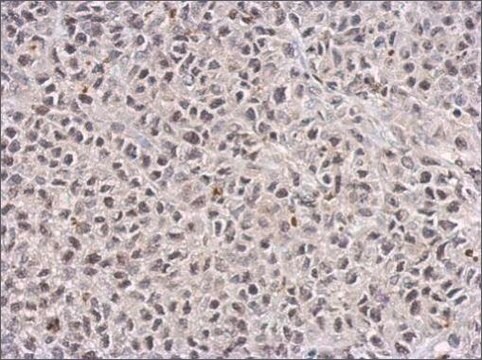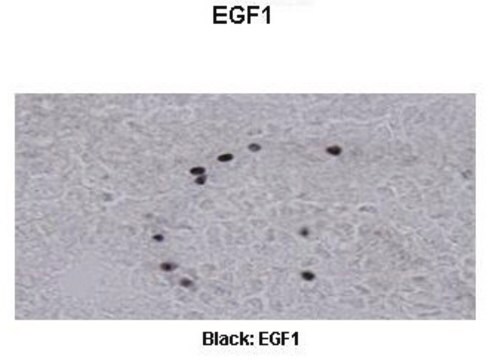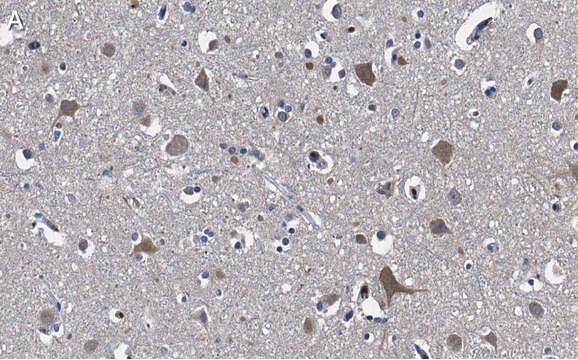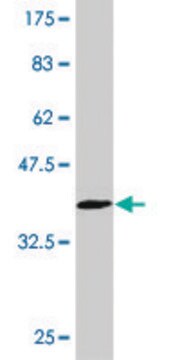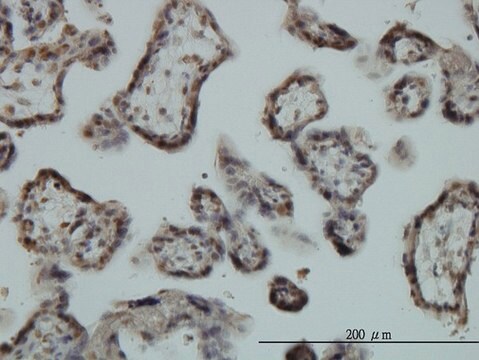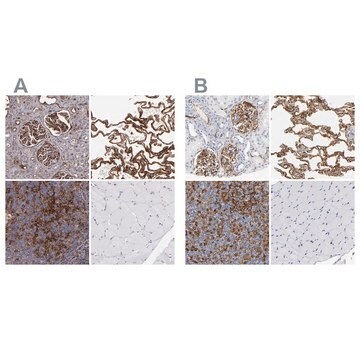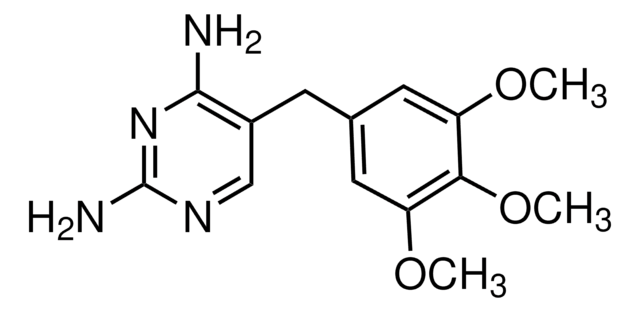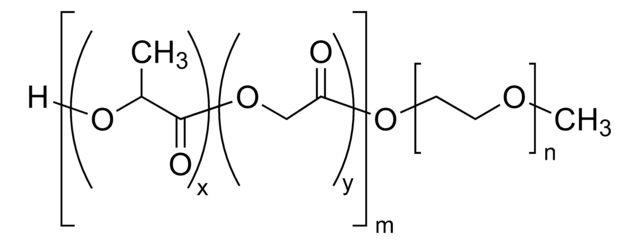ZRB1721
Anti-EGR1 Antibody, clone 1F22 ZooMAb® Rabbit Monoclonal

recombinant, expressed in HEK 293 cells
Synonim(y):
Białko wczesnej odpowiedzi wzrostowej 1; AT225; Białko A indukowane czynnikiem wzrostu nerwów; NGFI-A; Czynnik transkrypcyjny ETR103; Czynnik transkrypcyjny Zif268; Białko z palcem cynkowym 225; Białko z palcem cynkowym Krox-24
About This Item
Polecane produkty
pochodzenie biologiczne
rabbit
Poziom jakości
rekombinowane
expressed in HEK 293 cells
białko sprzężone
unconjugated
forma przeciwciała
purified antibody
rodzaj przeciwciała
primary antibodies
klon
1F22, recombinant monoclonal
opis
recombinant, expressed in HEK 293 cells
linia produktu
ZooMAb® learn more
Formularz
lyophilized
masa cząsteczkowa
calculated mol wt 57.51 kDa
observed mol wt ~80 kDa
oczyszczone przez
using Protein A
reaktywność gatunkowa
human
reaktywność gatunkowa (przewidywana na podstawie homologii)
monkey
opakowanie
antibody small pack of 25 μL
charakterystyka ekologicznej alternatywy
Waste Prevention
Designing Safer Chemicals
Design for Energy Efficiency
Learn more about the Principles of Green Chemistry.
rozszerzona walidacja
recombinant expression
Learn more about Antibody Enhanced Validation
sustainability
Greener Alternative Product
metody
affinity binding assay: suitable
immunocytochemistry: suitable
immunohistochemistry (formalin-fixed, paraffin-embedded sections): suitable
western blot: suitable
izotyp
IgG
sekwencja epitopowa
N-terminal half
numer dostępu Protein ID
numer dostępu UniProt
kategoria ekologicznej alternatywy
, Aligned
Warunki transportu
ambient
temp. przechowywania
2-8°C
docelowa modyfikacja potranslacyjna
unmodified
informacje o genach
human ... EGR1(1958)
Powiązane kategorie
Opis ogólny
Każde przeciwciało 10889 jest wytwarzane przy użyciu naszego zastrzeżonego rekombinowanego systemu ekspresji, oczyszczane do jednorodności i precyzyjnie dozowane w celu uzyskania solidnej i wysoce powtarzalnej spójności między partiami. Do użytku badaczy udostępniane są wyłącznie klony o najwyższej wydajności. Każde przeciwciało jest walidowane pod kątem wysokiej swoistości i powinowactwa w wielu zastosowaniach, w tym w najczęściej używanym zastosowaniu. Przeciwciała 10889 są niezawodnie dostępne i gotowe do wysyłki, gdy są potrzebne.
Specyficzność
Immunogen
Zastosowanie
Oceniane metodą Western Blotting w lizacie komórek HeLa.
Analiza Western Blotting: Rozcieńczenie 1:1000 tego przeciwciała wykryło EGR1 w lizacie komórek HeLa.
Testowane aplikacje
Analiza Western Blotting: Rozcieńczenie 1:1000 z reprezentatywnej partii wykryło EGR1 w lizacie komórek PC3.
Analiza immunohistochemiczna (parafina): Rozcieńczenie 1:100 z reprezentatywnej partii wykryło EGR1 w wycinkach tkanki ludzkiej prostaty.
Analiza immunocytochemiczna: Rozcieńczenie 1:100 z reprezentatywnej partii wykryło EGR1 w komórkach PC3.
Test wiązania powinowactwa: Reprezentatywna partia tego przeciwciała związała EGR1 z KD wynoszącym 1,3 x 10-8 w teście wiązania powinowactwa.
Uwaga: Rzeczywiste optymalne rozcieńczenia robocze muszą być określone przez użytkownika końcowego jako próbki, a warunki eksperymentalne mogą się różnić w zależności od użytkownika końcowego.
Opis wartości docelowych
Postać fizyczna
Przechowywanie i stabilność
Informacje prawne
Oświadczenie o zrzeczeniu się odpowiedzialności
Nie możesz znaleźć właściwego produktu?
Wypróbuj nasz Narzędzie selektora produktów.
Kod klasy składowania
13 - Non Combustible Solids
Klasa zagrożenia wodnego (WGK)
WGK 1
Temperatura zapłonu (°F)
Not applicable
Temperatura zapłonu (°C)
Not applicable
Wybierz jedną z najnowszych wersji:
Certyfikaty analizy (CoA)
Nie widzisz odpowiedniej wersji?
Jeśli potrzebujesz konkretnej wersji, możesz wyszukać konkretny certyfikat według numeru partii lub serii.
Masz już ten produkt?
Dokumenty związane z niedawno zakupionymi produktami zostały zamieszczone w Bibliotece dokumentów.
Nasz zespół naukowców ma doświadczenie we wszystkich obszarach badań, w tym w naukach przyrodniczych, materiałoznawstwie, syntezie chemicznej, chromatografii, analityce i wielu innych dziedzinach.
Skontaktuj się z zespołem ds. pomocy technicznej
